In our extensive series on magnificent castles, it would be a grave omission not to mention the Italian castles. Among the many castles in Italy, the true treasures are the villas. We highlight the three prominent types: castles, palaces, and villas.
Personally, I have a fondness for the villas. These exquisite structures trace their origins back to Roman times when affluent patricians possessed vast estates with grand residences known as villas. Although few remain from that ancient era, Italy is adorned with numerous luxurious villas that have stood for centuries.
Italy is a country where remarkable architecture with historical significance greets you at every turn. That, among other reasons, is why visiting Italy is a must for me. Whether in the bustling cities or the serene countryside, the historical structures are truly extraordinary.
Here are some noteworthy examples of Italian castles:
1. Castello Aragonese in Ischia Porto, Italy

Located in Ischia Porto, Italy, Castello Aragonese stands as the most remarkable historical monument in Ischia. Hiero I of Syracuse constructed it in 474 BC, along with two towers to oversee the movements of enemy fleets. Nowadays, the castle is open to the public year-round and is owned and maintained by the Mattera family.
Key details about Castello Aragonese:
– Location: Ischia Porto, Italy
– Construction: 474 BC
– Builder: Hiero I of Syracuse
– Architectural style: Medieval architecture
– Current status: Open to the public
– Current owner: Mattera family
2. Villa La Tesoriera in Turin, Italy

Villa La Tesoriera, situated in Turin, Italy, is an exquisite Baroque-style villa built for Aymo Ferrero di Cocconato, the councilor of state and general treasurer of the Savoy State. Construction commenced in 1713 and concluded in 1715. The villa passed through many hands before eventually coming under the ownership of the City of Turin in 1971.
Key details about Villa La Tesoriera:
– Location: Turin, Italy
– Construction: 18th century
– Builder: Aymo Ferrero di Cocconato
– Architectural style: Baroque style
– Current status: Open to the public
– Current owner: Government of Turin, Italy
3. Castello del Boccale in Tuscany, Italy

Rising majestically in Livorno, Tuscany, Castello del Boccale is a sprawling manor originally constructed as a lookout tower in the 16th century by the Medici family. Throughout the years, the castle changed hands multiple times and was eventually transformed into a neo-medieval style by Marchioness Eleonora Ugolini. Recently, it underwent restoration and was converted into residential apartments by the Livorno architect Ivano Falchini.
Key details about Castello del Boccale:
– Location: Livorno, Tuscany, Italy
– Construction: 16th century
– Builder: Medici family / Marchioness Eleonora Ugolini / Ivano Falchini
– Architectural style: Medieval style / Neo-medieval style
– Current status: Residential apartments / Open to the public (Outdoor Areas Only)
– Current owner: Private owner
4. Bologna Castle in Bologna, Italy

Bologna Castle finds its place in the Apennine mountain range, nestled between Tuscany and Emilia Romagna, a mere 45 km away from Bologna. Count Cesare Mattei erected this castle during the early 19th century, blending elements of Medieval Gothic and Moorish architectural styles. In 2005, the Foundation Carisbo restored the castle, and it is now accessible to the public.
Key details about Bologna Castle:
– Location: Bologna, Italy
– Construction: 19th century
– Builder: Count Cesare Mattei
– Architectural style: Medieval Gothic style / Moorish style
– Current status: Open to the public
– Current owner: Foundation Carisbo
5. Maschio Angioino in Naples, Italy
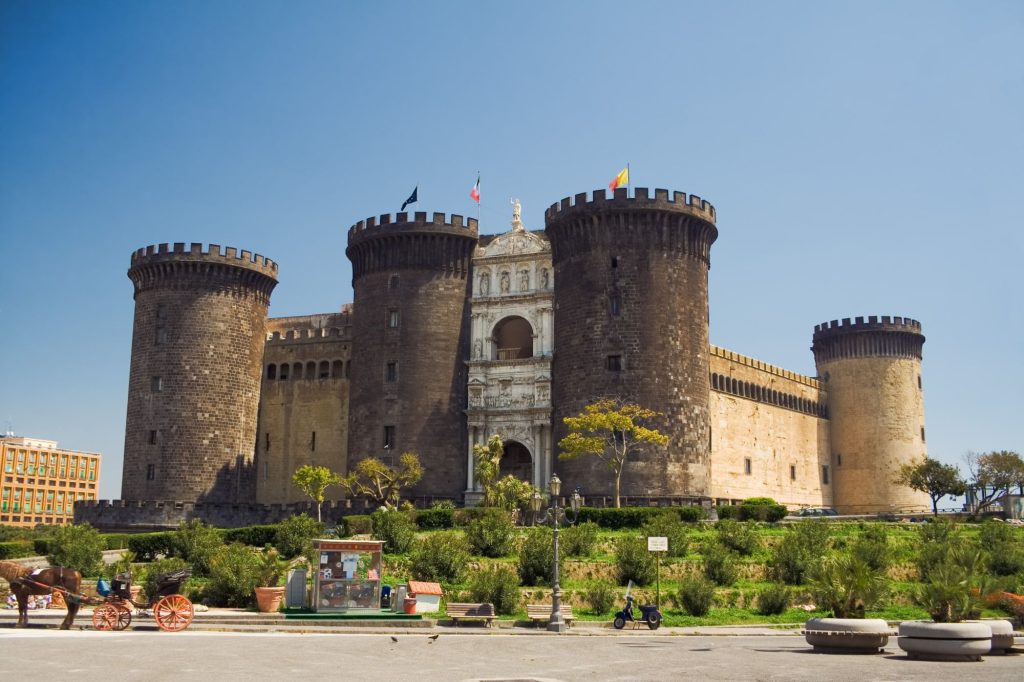
Commonly known as Maschio Angioino, Castel Nuovo stands proudly in central Naples, Italy, facing Piazza Municipio and the city hall (Palazzo San Giacomo). It was commissioned by Charles I of Anjou in the 13th century and was built by Pierre de Chaulnes and Pierre d’Angincourt. Over time, ownership of the castle changed hands multiple times. In the mid-20th century, it underwent restoration and now serves as a venue for cultural events and houses the Municipal Museum.
Key details about Maschio Angioino (Castel Nuovo):
– Location: Palermo, Naples, Italy
– Construction: 13th century
– Builders: Pierre de Chaulnes and Pierre d’Angincourt for Charles I of Anjou
– Architectural style: Medieval architecture
– Current status: Venue for cultural events / Municipal Museum
– Current owner: Comune di Napoli / Naples Comune
6. Castello del Buonconsiglio in Trento, Italy

Castello del Buonconsiglio traces its roots back to the 13th century when it was initially built as a fortified structure in Trento, northern Italy. Serving as the seat of the Prince-Bishops of Trent, the castle underwent modifications and expansions over the years.
It remained under the rule of the Prince-Bishops until 1803 when it came under the ownership of the Italian government, transforming into a National Museum. Following restoration efforts, the castle now houses the Provincial Gallery of Art, showcasing captivating artworks.
Key details about Castello del Buonconsiglio:
– Location: Trento, Italy
– Construction: 13th century
– Builders: Prince-Bishops of Trent
– Architectural style: Renaissance architecture
– Current status: House of the Provincial Gallery of Art
– Current owner: Italian Government
7. Castello del Valentino in Turin, Italy

Situated in Turin, Italy, Castello del Valentino stands as a historic building with origins dating back to the 13th century. It was mentioned for the first time during that period and was later purchased by Duke Emmanuel Philibert of Savoy in 1564.
Throughout its existence, the castle underwent several developments and renovations. Presently, it serves as the central building for the Architecture faculty of the Polytechnic University of Turin. Its magnificent architecture has earned it the status of a UNESCO World Heritage Site.
Key details about Castello del Valentino:
– Location: Turin, Italy
– Construction: 13th century / Purchased in the 16th century
– Builder: Duke Emmanuel Philibert of Savoy
– Architectural style: Renaissance architecture
– Current status: UNESCO World Heritage Site / Central building of the Architecture faculty of the Polytechnic University of Turin
– Current owner: University of Turin
8. Castello Estense in Ferrara, Italy
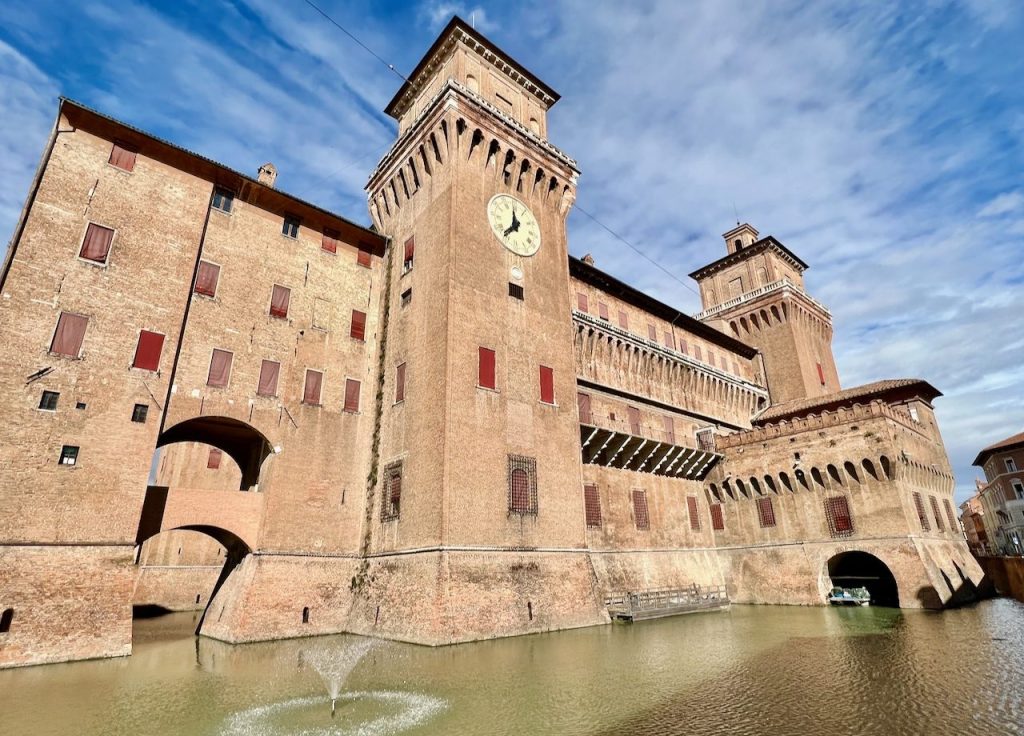
The Castello Estense, a medieval moated castle, graces the center of Ferrara in northern Italy. Its construction took place in the 14th century under the orders of Marquis Niccolò II d’Este, with the aim of fortifying the city against potential uprisings by the people of Ferrara.
Over time, the castle experienced modifications and restorations. It particularly suffered severe damage during World War II due to allied bombings, but subsequent restoration efforts revived its grandeur. Today, the castle symbolizes the city of Ferrara and is a popular tourist attraction.
Key details about Castello Estense:
– Location: Ferrara, Italy
– Construction: 14th century
– Builder: Marquis Niccolò II d’Este
– Architectural style: Renaissance architecture
– Current status: Symbol of the city / Popular tourist site
– Current owner: Province of Ferrara
9. Castle of Barolo in Piedmont, Italy

With a history spanning centuries, the Castle of Barolo can be traced back to the 10th century. When the Falletti family assumed control of the castle, they undertook various transformations and reconstructions after its severe damage during the wars of the 16th century, carried out by Giacomo and Manfredo Falletti.
Following the demise of the last heir of the Falletti family, the castle was abandoned. Eventually, it was acquired by the Township of Barolo, which now operates it as a winery and wine museum.
Key details about the Castle of Barolo:
– Location: Barolo, Piedmont, Italy
– Construction: 10th century
– Builders: Unknown / Falletti family
– Architectural style: Medieval architecture
– Current status: Winery / Wine Museum
– Current owner: Township of Barolo
10. Castello Ducale di Crecchio in Chieti, Italy

Originally built by the Lombards in the 8th century, the Castello Ducale di Crecchio stands in the town of Crecchio, in the province of Chieti, Italy. It changed hands over the centuries, from the Normans to the Aragona family in the 15th century. Later, it became the residence of King Vittorio Emanuele III in 1943.
The castle suffered significant damage during World War II but was rebuilt afterward. Today, it is owned by the Municipality of Crecchio and serves as the Byzantine and High Medieval Museum.
Key details about the Castle of Crecchio:
– Location: Crecchio, Province of Chieti, Italy
– Construction: 8th century
– Builders: Lombards
– Architectural style: Early medieval architecture
– Current status: Byzantine and High Medieval Museum
– Current owner: Municipality of Crecchio
11. Castello di Govone in Govone, Italy
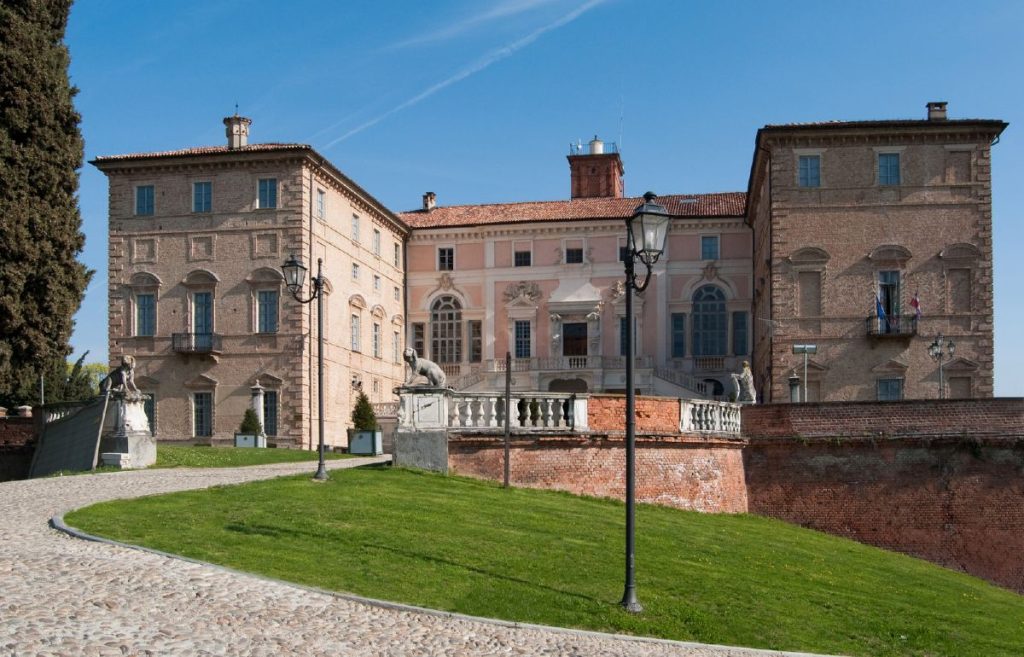
Originally constructed as a fortress with bastions and corner towers in the 10th century, Castello di Govone in Govone, Italy, underwent reconstructions in the 13th century under the Counts Solaro, Lords of Govone. Throughout its history, the castle changed hands multiple times.
It was eventually acquired by Vittorio Amedeo III, the King of Sardinia, for his sons Carlo Felice, Duca del Genevese, and Giuseppe Benedetto Placido, Count of Moriana. Today, the castle is listed as a UNESCO World Heritage Site, standing as a testament to its historical significance.
Key details about Castello di Govone:
– Location: Piazza Vittorio Emanuele, Govone, Italy
– Construction: 10th century
– Builders: Unknown / Counts Solaro, Lords of Govone
– Architectural style: Medieval architecture / Gothic style
– Current status: UNESCO World Heritage Site
– Current owner: Italian Government
12. The Castle of Panoccia in Panoccia, Italy
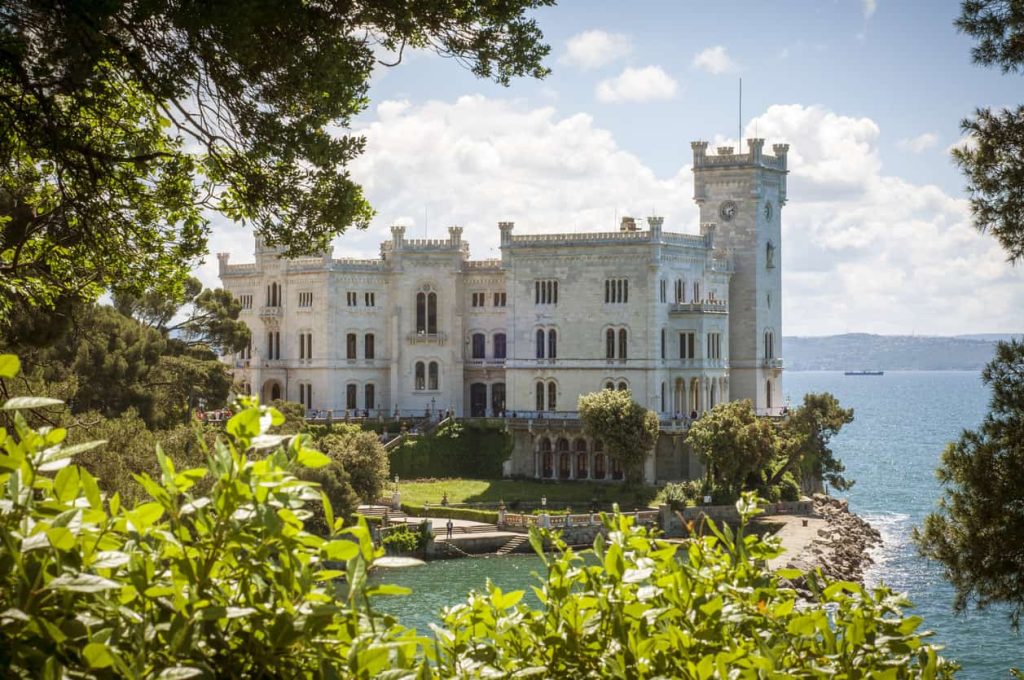
Located in the small town of Panoccia, Italy, The Castle of Panoccia is a medieval fortress with a history that spans centuries. While limited information is available about its construction and builders, the castle stands as a testament to the architectural styles of the time.
Key details about The Castle of Panoccia:
– Location: Panoccia, Italy
– Construction: Unknown
– Builders: Unknown
– Architectural style: Medieval architecture
– Current status: Unknown
– Current owner: Unknown
13. Castle of San Marino in San Marino, Italy
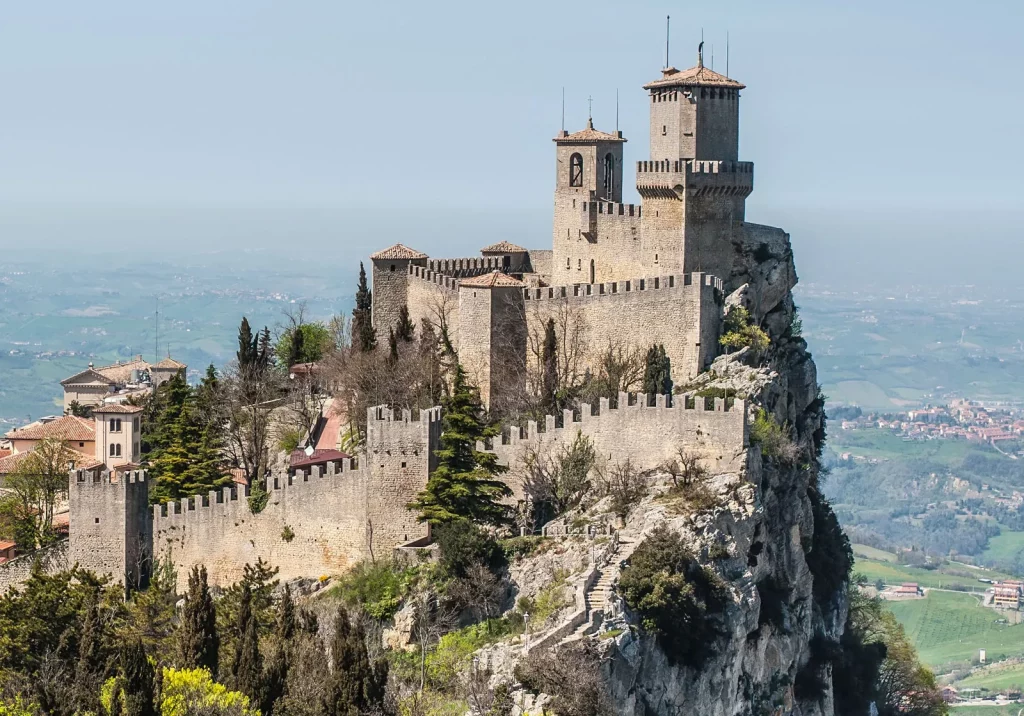
The Castle of San Marino, known as The Three Towers of San Marino, is an iconic landmark located atop the three peaks of Monte Titano in the capital city of San Marino. These towers, depicted on the national flag and coat of arms, hold significant historical and cultural value.
The oldest tower, Guaita, originated in the 11th century and served as a prison. The second tower, Cesta, was built in the 13th century on the remains of a Roman fort, while the third tower, Montale, was constructed in the 14th century as protection against the rising power of the Malatesta family in the region.
Today, the Castle of San Marino is a UNESCO World Heritage Site and is open to the public. It also houses the Municipal Museum, showcasing the rich history of the region.
Key details about the Castle of San Marino:
– Location: San Marino, Italy
– Construction: 11th century (Guaita) / 13th century (Cesta) / 14th century (Montale)
– Builders: Unknown
– Architectural style: Neo-classical architecture / Neo-gothic style
– Current status: UNESCO World Heritage Site / Open to the public
– Current owner: Italian Government
14. Chianti Vineyard in Tuscany, Italy

No visit to Chianti, Italy, is complete without exploring its famous vineyards and savoring the flavors they produce. The history of Chianti dates back to at least the 13th century, and it has gained a reputation for producing some of the best wines in Italy.
Key details about the Chianti vineyard:
– Location: Tuscany, Italy
– Established: 13th century
– Founders: Unknown
– Style: N/A
– Current status: Popular vineyard
– Current owner: Italian Government
15. Villa Ducale in Stresa, Italy
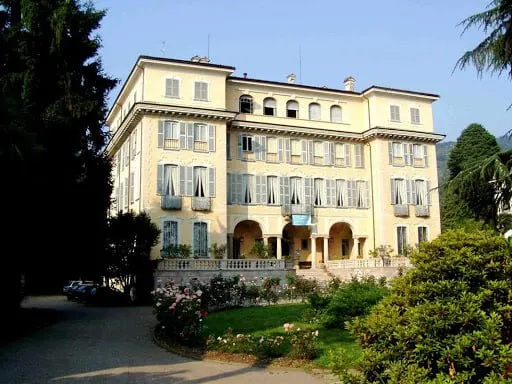
Villa Ducale, the oldest exclusive residence in Stresa, Italy, has been gracing the area since at least 1771. Built on the lakeshore by the Bolongaro family from Stresa, it later came into the possession of the Rosminians.
Over the years, Villa Ducale has welcomed esteemed guests and served as a preferred holiday destination for various dignitaries. It has hosted individuals such as Ruggero Bonghi, Niccolò Tommaseo, and Alessandro Manzoni. Currently, it serves as the headquarters of the International Centre for Rosminian Studies, featuring a museum dedicated to philosophy and a valuable library containing authoritative biomedical texts.
Key details about Villa Ducale:
– Location: Stresa, Italy
– Construction: 18th century
– Builders: Bolongaro family
– Architectural style: Rococo style
– Current status: Headquarters of the International Centre for Rosminian Studies / Hotel and Restaurant
– Current owner: Private owner
16. Doge’s Palace in Venice, Italy
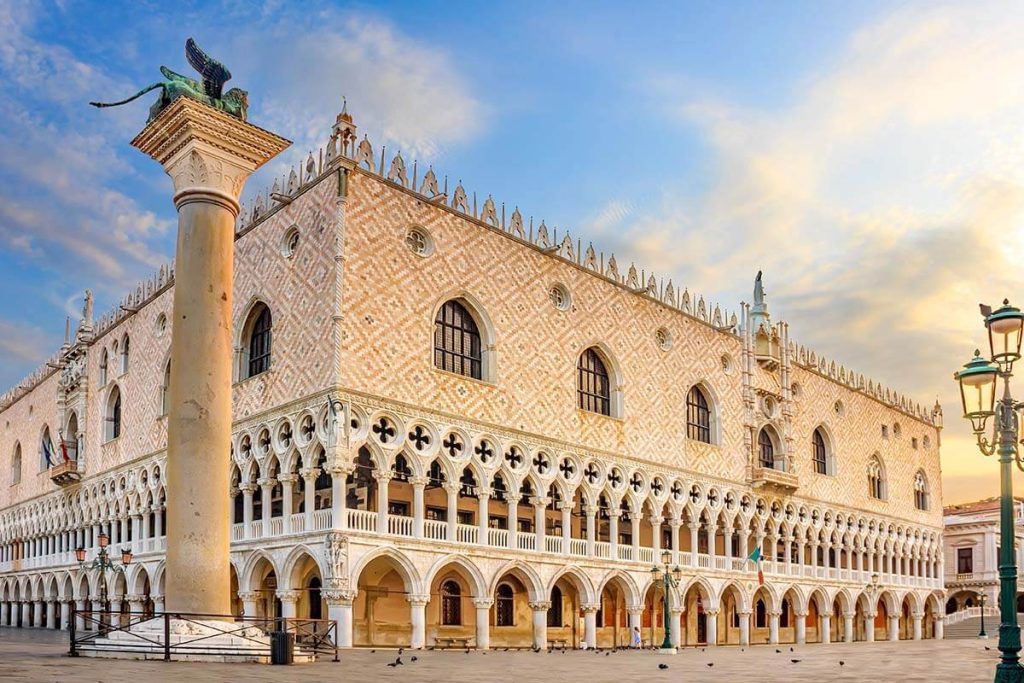
The Doge’s Palace, also known as the Palazzo Ducale or Pałaso Dogal, is a remarkable Venetian Gothic-style palace situated in the enchanting city of Venice, Italy. Its origins can be traced back to the 9th century, although it was completely rebuilt in the 10th century following a devastating fire. The palace was further expanded and enhanced under the patronage of Doge Sebastiano Ziani, incorporating elements of Renaissance architecture into its design.
Today, the Doge’s Palace is an integral part of the Venetian museums network, overseen by the Fondazione Musei Civici di Venezia. Visitors can explore its opulent chambers, admire the stunning artwork adorning its walls, and experience the grandeur of the former seat of Venetian power.
Key details about the Doge’s Palace:
– Location: Venice, Italy
– Construction: 9th century / Rebuilt in the 10th century
– Builder: Unknown / Doge Sebastiano Ziani
– Architectural style: Venetian Gothic style with Renaissance elements
– Current status: Part of the Venetian museums network
– Current owner: Italian Government
17. The Castle of Agliè in Agliè, Italy

The Castle of Agliè, a noble medieval fortress and its surrounding gardens, stands as a testament to the ancient history of Agliè, Italy. Its construction dates back to the 12th century, and it was formerly owned by the Marquises of San Martino.
Over the centuries, the castle underwent development and renovation, evolving into a splendid architectural masterpiece. Today, it serves as a museum open to the public, offering visitors a glimpse into the castle’s rich past. The Italian Government takes responsibility for its preservation and maintenance.
Key details about the Castle of Agliè:
– Location: Piazza del Castello, Agliè, Italy
– Construction: 12th century
– Builders: Marquises of San Martino
– Architectural style: Medieval architecture
– Current status: UNESCO World Heritage Site / Museum / Open to the public
– Current owner: Italian Government
18. Gonzaga Saint George Castle in Lombardy, Italy

The Castle of St. George, situated in the enchanting city of Mantua, Lombardy, northern Italy, was constructed in the late 14th century and completed in the early 15th century. Commissioned by Francesco I Gonzaga, a noble figure of the Gonzaga family, the castle was designed by Bartolino da Novara, a renowned military architect of the time.
As part of the Palazzo Ducale di Mantova, the Castle of St. George now operates as a museum, allowing visitors to delve into the rich history of the region. Certain areas of the castle are open to the public, showcasing the grandeur and architectural magnificence of the era.
Key details about the Gonzaga Saint George Castle:
– Location: Mantua, Lombardy, northern Italy
– Construction: 14th century
– Builder: Francesco I Gonzaga
– Architectural style: Medieval architecture
– Current status: UNESCO World Heritage Site / Museum / Open to the public
– Current owner: Gonzaga family / Italian Government
19. Castello di Miramare in Trieste, Italy

Nestled in the captivating city of Trieste, northeastern Italy, Castello di Miramare, or Miramare Castle, stands as a testament to architectural splendor. Built in the 19th century by Emperor Maximilian I and Empress Carlota of Mexico, the castle’s construction was overseen by engineer Carl Junker.
Today, the castle remains a popular tourist site, open to the public under the management of the Sopraintendenza per i Beni Architettonici ed il Paesaggio e per il Patrimonio Storico, Artistico ed Etnoantropologico of the Friuli-Venezia Giulia region. Maximilian’s residence within the castle has been transformed into the Historical Museum of Miramare Castle, offering visitors a glimpse into the lives of its former royal inhabitants.
Key details about the Miramare Castle:
– Location: Trieste, northeastern Italy
– Construction: 19th century
– Builders: Emperor Maximilian I / Empress Carlota of Mexico
– Architectural style: Medieval architecture / Gothic style / Renaissance style
– Current status: Museum / Open to the public
– Current owner: Italian Government
20. Montalto Dora Castle in Turin, Italy
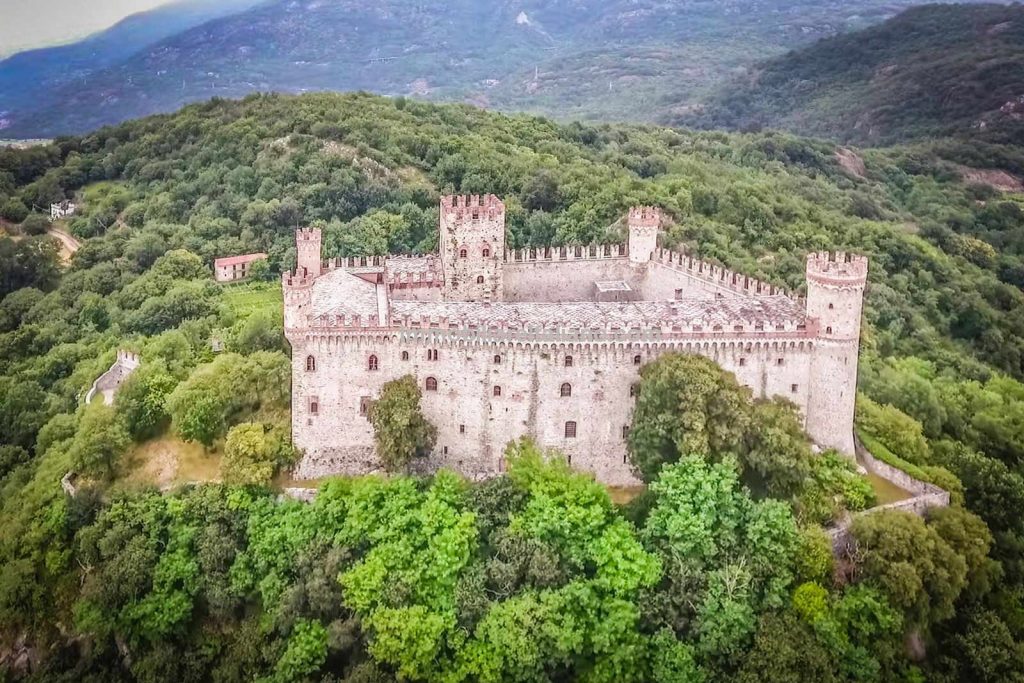
The Montalto Dora Castle, located in the city of Turin, Italy, traces its roots back to the 12th century. Originally falling under the jurisdiction of Ivrea City’s Bishop, the castle played a role in the war between the Duchy of Savoy and the French troops of the Marquis d’Harcourt in the 17th century.
The castle eventually became the property of the Allioni of Brondello family, who undertook extensive restoration work to restore it to its former glory. Today, Montalto Dora Castle stands proudly as a historical site, open to the public, allowing visitors to appreciate its rich heritage.
Key details about Montalto Dora Castle:
– Location: Turin, Italy
– Construction: 12th century
– Builder: Bishopric of Ivrea
– Architectural style: Medieval architecture
– Current status: Open to the public
– Current owner: Brondello family
21. The Palace of Justice in Rome, Italy

Situated in Rome, Italy, the Palace of Justice serves as the seat of the Supreme Court of Cassation and the Judicial Public Library. Construction of this magnificent palace took place in the late 19th century, with Perugia architect Guglielmo Calderini overseeing the design. The architectural style of the palace incorporates elements of Renaissance and Baroque.
The palace was inaugurated in 1911 in the presence of King Victor Emmanuel III of Italy. Today, it remains open to the public, standing as a remarkable testament to Italy’s judicial system and architectural heritage.
Key details about the Palace of Justice:
– Location: Rome, Italy
– Construction: 19th century
– Architect: Guglielmo Calderini
– Architectural style: Renaissance style / Baroque architecture
– Current status: Open to the public
– Current owner: Italian Government
22. Palazzo Carignano in Turin, Italy
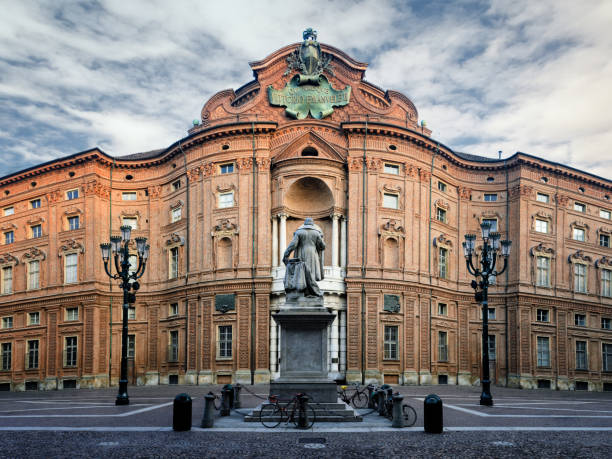
Located in the heart of Turin, Italy, Palazzo Carignano is a historical building that has played a significant role in the city’s heritage. It houses the Museum of the Risorgimento and was once a private residence of the Princes of Carignano. The construction of the palace took place in the 17th century, commissioned by Prince Emmanuel Philibert and designed by architect Guarino Guarini in the Baroque style.
Today, Palazzo Carignano stands as a UNESCO World Heritage
Site, preserving the history of the Risorgimento movement and offering visitors a chance to delve into Italy’s past. It serves as a testament to Turin’s rich cultural and architectural heritage.
Key details about Palazzo Carignano:
– Location: Turin, Italy
– Construction: 17th century
– Builder: Prince Emmanuel Philibert
– Architectural style: Baroque architecture
– Current status: Museum of the Risorgimento / UNESCO World Heritage Site
– Current owner: Italian Government
These remarkable castles, palaces, and historical sites in Italy offer a glimpse into the country’s rich history, architectural prowess, and cultural heritage. From the grandeur of Venice’s Doge’s Palace to the picturesque charm of Castello di Miramare in Trieste, each location holds stories waiting to be discovered. Exploring these sites allows visitors to immerse themselves in the beauty, artistry, and historical significance of Italy’s architectural treasures.
